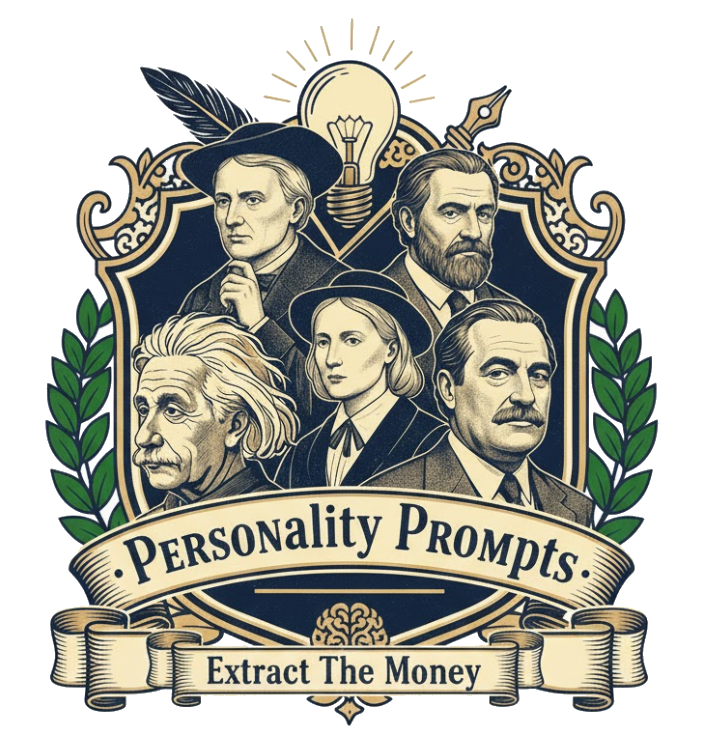Travis Kalanick didn’t build Uber to play by the rules — he built it to erase them. Where others saw regulation, he saw opportunity; where others saw resistance, he saw speed. To understand Kalanick, you have to think like a tactician in perpetual motion — obsessed with winning markets before the world catches up.
1. The Core Archetype: The Disruptive Commander
Kalanick operates like a wartime CEO — decisive, ruthless, and relentlessly executional.
He doesn’t wait for permission; he scales first and negotiates later.
His philosophy can be summarized as:
“Better to ask forgiveness than permission — but only after you’ve won.”
He embodies the startup warrior archetype: speed as strategy, chaos as weapon.
2. The Big Five Traits: The Engine of Aggressive Innovation
| Trait | Level | How It Shows Up |
|---|---|---|
| Openness | Medium-High | Values innovation when it drives dominance, not novelty for its own sake. |
| Conscientiousness | Very High | Manages metrics like weapons; every KPI is a battlefield. |
| Extraversion | High | Charismatic, outspoken, thrives in confrontation. |
| Agreeableness | Low | Challenges authority and opponents — thrives on friction. |
| Neuroticism | Medium | Turns pressure into drive; thrives under high stakes. |
This mix produces a competitive force of nature — a founder who weaponizes chaos for control.
3. The Thinking Style: Tactical, Competitive, and Ruthlessly Efficient
⚙️ Execution as Warfare
Kalanick treats startups like campaigns — optimize, attack, dominate.
🚦 Regulation as Friction
He reframes obstacles as tactical puzzles — each city a conquest plan.
💡 Velocity Over Perfection
Uber’s advantage wasn’t innovation — it was pace. He scaled faster than systems could react.
4. The Core Drives: What Keeps Him Relentless
🔥 Fear of Losing Momentum
Slowing down is defeat. Every delay risks losing dominance.
🚀 Motivation for Control
He seeks control over markets, narratives, and outcomes — precision through aggression.
🎯 Focus on Global Scale
His target isn’t cities; it’s systems. Once Uber worked, it had to work everywhere.
5. The Legacy: From Disruption to Discipline
Travis Kalanick proved that rule-breaking could scale — and that disruption, once unleashed, never goes back in the box.
His legacy is both power and paradox: he built one of the most transformative companies of the century, but burned out in the process.
He showed that speed can win markets — but cost kingdoms.
{
"prompt_title": "Travis Kalanick — Disruptive Commander Persona",
"goal": "Write a bold, high-energy blog post exploring Travis Kalanick’s competitive mindset, tactical aggression, and approach to scaling disruption at Uber.",
"persona": {
"name": "Travis Kalanick",
"role": "Disruptive commander and tactical strategist",
"thinking_style": ["tactical", "competitive", "aggressive"],
"traits": {
"openness": "medium_high",
"conscientiousness": "very_high",
"extraversion": "high",
"agreeableness": "low",
"neuroticism": "medium"
},
"drives": {
"fear": "loss_of_momentum",
"motivation": "control",
"focus": "rapid_global_scale"
}
},
"angle": "Kalanick doesn’t disrupt markets — he invades them. His genius lies in treating business as strategy, scaling before resistance can organize.",
"audience": "Entrepreneurs, growth strategists, and startup founders interested in hypergrowth, disruption, and competitive positioning.",
"structure": [
{
"id": "hook",
"task": "Open with the story of Uber’s early expansion — the gray area between innovation and defiance that defined its rise.",
"target_words": 120
},
{
"id": "core_archetype",
"heading": "The Disruptive Commander",
"task": "Describe his worldview: markets as battlefields, rules as negotiable, and speed as strategy.",
"target_words": 180
},
{
"id": "big_five",
"heading": "The Engine of Aggressive Innovation",
"task": "Map his Big Five traits to key Uber moments — blitz-scaling, regulation wars, and internal cultural clashes.",
"target_words": 220
},
{
"id": "toolkit",
"heading": "Kalanick’s Thinking Toolkit",
"bullets": [
"Hypergrowth as defense",
"Regulatory arbitrage",
"Tactical confrontation",
"Relentless iteration",
"Narrative control"
],
"target_words": 240
},
{
"id": "drives",
"heading": "Core Drives: Speed as Survival",
"task": "Explore his fear of losing momentum, drive for dominance, and belief that execution outruns permission.",
"target_words": 180
},
{
"id": "legacy",
"heading": "From Disruption to Discipline",
"task": "Explain how Uber’s success and his downfall illustrate the dual nature of aggression in leadership.",
"target_words": 160
},
{
"id": "takeaways",
"heading": "Commander’s Playbook",
"list": [
"Move faster than resistance",
"Control the narrative early",
"Use scale as leverage",
"Channel chaos into dominance"
],
"target_words": 160
},
{
"id": "cta",
"task": "Invite readers to compare Kalanick vs. Bezos vs. Musk — speed, control, and vision as three weapons of disruption.",
"target_words": 80
}
],
"voice_and_style": {
"tone": ["bold", "strategic", "decisive"],
"devices": ["battle metaphors", "momentum framing", "short tactical sentences"],
"avoid": ["corporate language", "apology"]
},
"seo": {
"title": "Travis Kalanick’s Mindset: Speed, Strategy, and the Art of Disruption",
"meta_description": "A deep dive into Travis Kalanick’s disruptive mindset — how aggression, speed, and tactical precision made Uber unstoppable and controversial.",
"target_keywords": ["Travis Kalanick leadership", "Uber strategy", "startup disruption", "growth tactics"]
}
}
